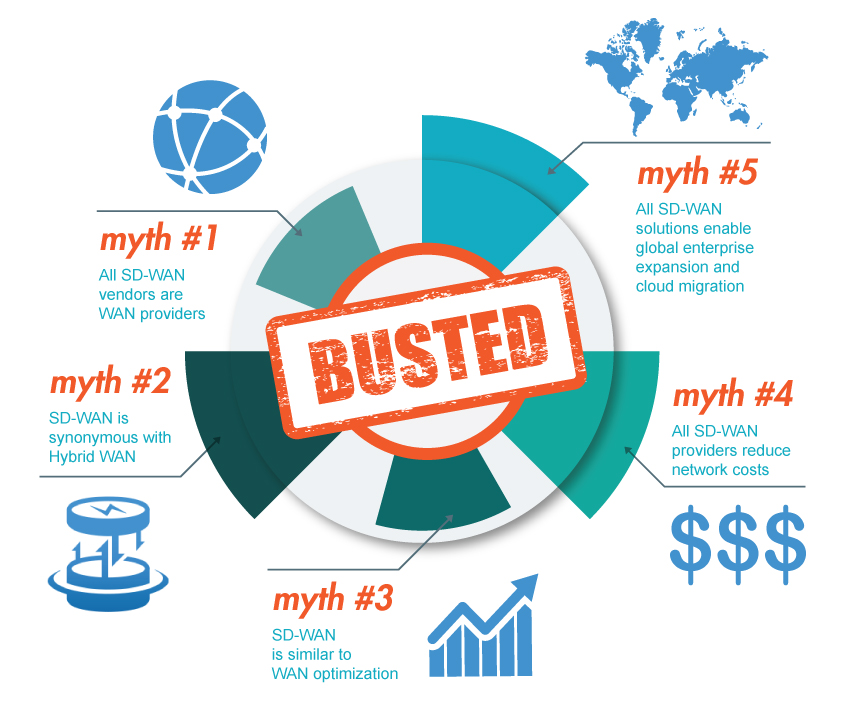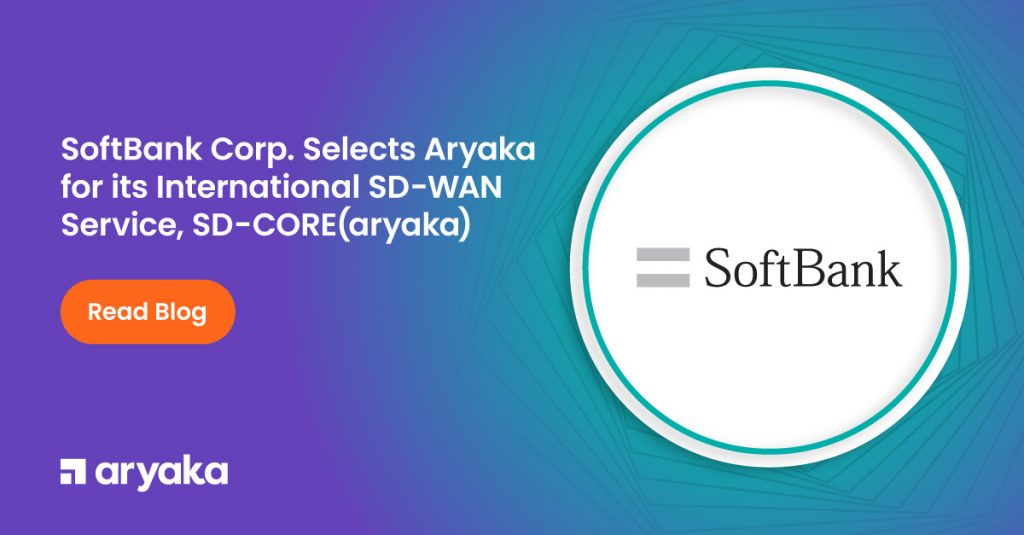Hype vs Reality: Top 5 SD-WAN Myths Busted!

Most of what’s written about SD-WAN discusses the technology’s potential to transform network connectivity by making networks more agile, flexible, and cost-effective for both enterprises and service providers. The truth is, while this technology delivers many benefits compared to legacy networks, there may be shortcomings depending on the implementation.
A multitude of startups and existing WAN optimization vendors have positioned themselves as SD-WAN solution providers. Each of them have spun their stories around the scope of their particular technology and advantages, resulting in a fair bit of confusion among buyers.
This confusion has led to quite a few myths emerging about SD-WAN you should be aware of before evaluating any solution and investing in this evolving technology.
Myth #1: All SD-WAN Vendors are WAN Providers
Contrary to what the phrase “SD-WAN vendor” might suggest, most companies that consider themselves in this space don’t actually deploy physical networks for enterprise connectivity. Their solutions are limited to providing edge appliances that perform policy-based routing functions with some amount of network segmentation.
This means that businesses still need to invest in traditional network infrastructure.
Myth #2: All SD-WANs Require Hybrid WANs
An SD-WAN enables management of the network from a centralized location separate from the actual devices. Hybrid WANs integrate multiple network links of varying cost and quality levels at the edge, and represent only one of the manifestations of an SD-WAN solution.
In fact, the idea of using multiple links at the edge based on preset priority levels is a couple of decades old. For instance, one might have used broadband Internet for low-priority HTTP traffic, while reserving the more expensive and higher quality MPLS links for mission-critical applications. The problem is that network architecture designs were constructed in silos (one for MPLS and one for public Internet), and used to be implemented by network managers and administrators themselves. To architect and manage these solutions individually used to be quite cumbersome.
The advent of SD-WAN enabled such a system to be automated and remotely controlled. A few “SD-WAN” startups saw an opportunity here, and started offering hybrid WAN systems as a solution to enterprises. However, there is more to SD-WAN technology than just hybrid WAN deployments.
Myth #3: SD-WAN is Synonymous with WAN Optimization
Far from it! WAN optimization helps businesses make the most out of their bandwidth by using a combination of data compression and deduplication technologies to address latency, packet loss, and congestion issues prevalent on the WAN. It typically requires customer premise equipment (CPE) to be deployed at both ends of the network and managed by IT departments for complete network and application optimization.
This technology is very different from the purposes and functions of SD-WAN, which is designed to deploy and manage a network from a central location.
Myth #4: All SD-WAN Vendors Reduce Total Cost of Ownership
Businesses that used to rely on expensive MPLS solutions to achieve acceptable application performance, now use hybrid WANs to shift low-priority traffic to cheap Internet links, and continue with scaled-down MPLS for mission-critical traffic. However, enterprises still need to negotiate and provision multiple network links and pay expensive monthly fees for their usage.
If an enterprise opts for lower-cost networks, one major consequence will be the impact on application performance. The fact mission-critical traffic could be pushed down to poorer links during times of heavy traffic should be a matter of concern.
Businesses need a solution that uses SD-WAN principles across the entire WAN, end-to-end, not just at the edge.
Myth #5: All SD-WAN Solutions Enable Global Cloud Migration
Most SD-WAN vendors do not enable cloud migration because they don’t deliver direct connectivity into these services.
One of the caveats of adopting an SD-WAN/hybrid WAN architecture is that you still need to subscribe to multiple MPLS or broadband links if you wish to ensure reliable performance of critical applications.
Deploying conventional hybrid WANs require long deployment timelines for MPLS links (as long as 60-120 days depending on location), if you care about application performance. In addition, MPLS offers limited connectivity to most cloud service providers. In the absence of MPLS, you would have to depend on the unreliable public Internet to access even mission-critical workloads. As a result, you are forced to choose between application performance and organizational agility—a no-win situation.
SD-WAN Without the Myth and Hype
A global SD-WAN solution will integrate the benefits of embedded network optimization and application acceleration for cloud and on-premises environments with reliable, secure, and dedicated private connectivity into a single platform. It will eliminate the need for dedicated links that take months to provision, thereby, providing a cloud-delivered network that is up and running in days, and not months.
The best way of truly gaining the benefits of software-defined networking is by investing in a global SD-WAN solution that runs over a dedicated private network with embedded WAN optimization, application acceleration, multilayered security—end-to-end, and is delivered as a service. By integrating all these services into one SD-WAN solution platform, global businesses are enabled to connect their branch offices, accelerate their application performance, and scale their enterprise for end-users around the world.
Continue here to learn more from our latest white paper, “Top 5 SD-WAN Myths: Busted.”
- Accelerate CAD/CAM Performance
- Improve Zoom Conferencing Performance
- Calypso Embraces a SaaS-first Strategy
- CallisonRTKL Transforms their WAN
- Kleinfelder Improves Application Performance
- Teradyne Transforms their WAN
- SAP web application performance
- Kleinfelder Improves Application Performance
- Industrial Manufacturing Company Transforms WAN










